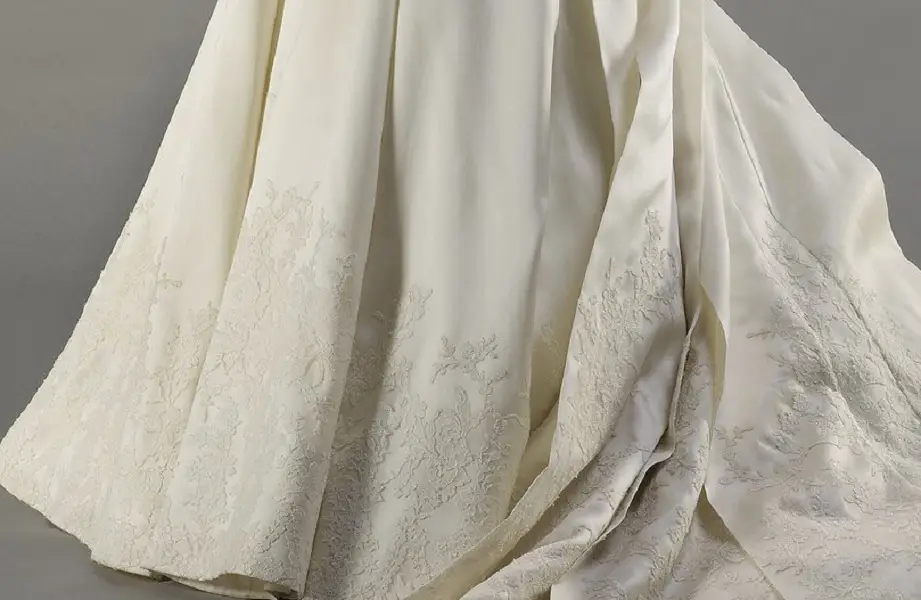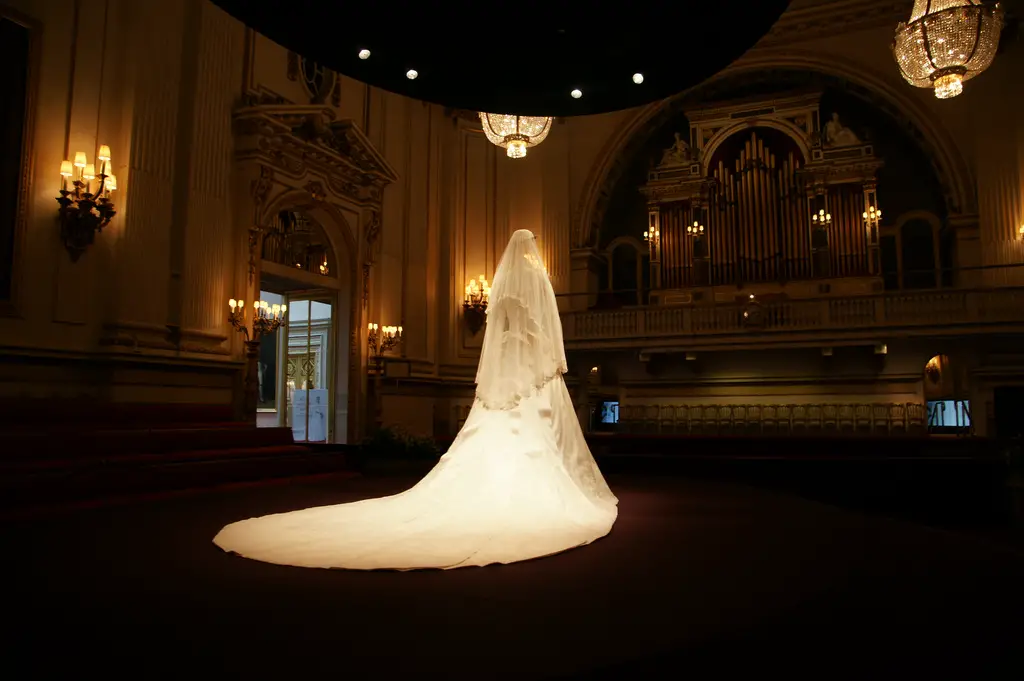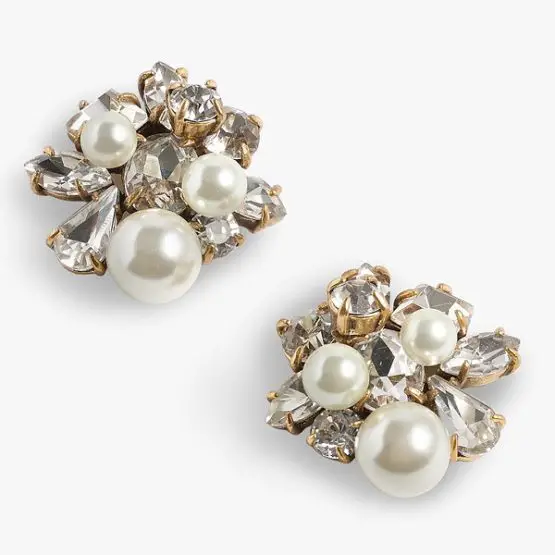Alexander McQueen Wedding Dress
Description
On April 29, 2011, when the 22.8 million people were eagerly awaiting, Catherine Middleton stepped out of state Rolls-Royce Phantom VI in an ivory satin and lace gown, designed by Sarah Burton the creative director of Alexander McQueen, outside the Westminster Abbey.

Ahead of the wedding, about the selection of Gown designer, Palace said,
“Miss Middleton chose British brand Alexander McQueen for the beauty of its craftsmanship and its respect for traditional workmanship and the technical construction of clothing. Miss Middleton wished for her dress to combine tradition and modernity with the artistic vision that characterises Alexander McQueen’s work. Miss Middleton worked closely with Sarah Burton in formulating the design of her dress. The dress epitomises timeless British craftsmanship by drawing together talented and skilled workmanship from across the United Kingdom. The dress design pays tribute to the Arts and Crafts tradition, which advocated truth to materials and traditional craftsmanship using simple forms and often Romantic styles of decoration.”

The ivory satin bodice was padded slightly at the hips and narrowed at the waist, and was inspired by the Victorian tradition of corsetry that is a particular Alexander McQueen hallmark and 1950s fashion. The lace bodice features a V-neck line and long sleeves. The lace detail incorporated the rose symbolising England, the thistle for Scotland, the Shamrock for Ireland and the daffodil represented Wales.

From the Telegraph’s report,
Sarah Burton went to such lengths to hide her involvement that she told no-one but a core group of colleagues who were to assist her in the design. “It was so great to actually keep a secret, especially in this day and age when everyone talks about everything.” Burton’s parents, Anthony and Diane Heard, were told only on the eve of the ceremony. She was unable to tell them earlier because she was bound by a confidentiality agreement with Buckingham Palace. To find out just what their daughter had created, the couple had to join the crowds on the Mall and catch a glimpse of the Duchess via a periscope.
Burton kept up an elaborate charade for months. “Because my core team knew, it was okay for me to disappear and then come back, and then disappear again. But I remember other people asking me, ‘Are you coming in on Friday?’ And I’d say, ‘Oh, yeah, see you in the morning’. I’d be scheduling meetings knowing full well I wasn’t going to be there for them,” she told Vogue. On the day of the wedding, the designer accompanied the Duchess to Westminster Abbey and made the final adjustments to the nine-foot train. “I remember standing in Westminster Abbey thinking, ‘This is unreal’. It was like a fairy tale. And all I could think was, ‘I hope I don’t trip over’. I didn’t realise the enormity of it until much nearer the wedding day. It was a magical experience,” she said.

The bodice of the dress incorporated floral motifs cut from machine-made lace, which was then appliquéd on to silk net (tulle) by workers from the Royal School of Needlework at Hampton Court Palace.

Jenny Adin-Christie, 33, an embroiderer from Chessington, who worked on the Duchess of Cambridge’s Wedding Dress, demonstrates the applique embroidery technique similar, but not the same as that used on the Wedding Dress, at the Royal School of Needlework in Hampton Court Palace, South West London. The Palace revealed more on this process,
“The lace appliqué for the bodice and skirt was hand-made by the Royal School of Needlework, based at Hampton Court Palace. The lace design was hand-engineered (appliquéd) using the Carrickmacross lace-making technique, which originated in Ireland in the 1820s. Individual flowers have been hand-cut from lace and hand-engineered onto ivory silk tulle to create a unique and organic design, which incorporates the rose, thistle, daffodil and shamrock.”
As the laces for the gown were sourced from different sources, a great deal of time and care was put into the work to ensure that each flower was the same colour.

On the back of the dress were 58 buttons finished with gazar and organza that were fasten using rouleau loops.

The skirt, underskirt trim, and bridal train also incorporated lace appliquéd similarly. The silhouette of the long full skirt was designed to echo an opening flower with white satin gazar arches and pleats.

A closer look at the Skirt hemline.

The main body of the dress was made in ivory and white satin gazar, using UK fabrics which had been specially sourced by Sarah Burton, with soft pleats which unfolded to the floor, forming a Victorian-style semi-bustle at the back, and finishing in a short train (which measured 270 cm—110in- 9ft).

The skirt and the train were made of Solstiss lace.

To partially fulfill the ‘something blue’ portion of the British wedding tradition, a blue ribbon was sewn inside the dress. The design for the bodice of the dress featuring lace in the style of the 19th century was the ‘something old’.

Her veil was made of layers of ivory silk-tulle with a trim of hand-embroidered flowers.

Another look at the wedding dress.

Talking about designing one of the iconic Royal wedding gowns, Sarah Burton said, “I think what we wanted to achieve was something that was incredibly beautiful and intricately worked. A lot of it is in the subtlety of the detail, the handcrafted lace, and the cuts and the shapes and the folds involved in the construction of the dress, yet we still had to remember it was in Westminster Abbey so it still had to have a presence. It was this idea of having a dress with a presence and of historical importance yet being modern at the same time.“

Catherine paired the dress with Alexander McQueen Wedding Shoes, Robinson Pelham Wedding Earrings, and Cartier Halo Tiara. The dress along with all other wedding accessories went to the Buckingham Palace’s summer exhibition in June 2011. Queen Elizabeth II went to see the gown, before the public opening of the exhibition, with the Duchess of Cambridge.
The beautiful moments when Prince William’s bride arrived at Westminster Abbey ahead of her wedding.






